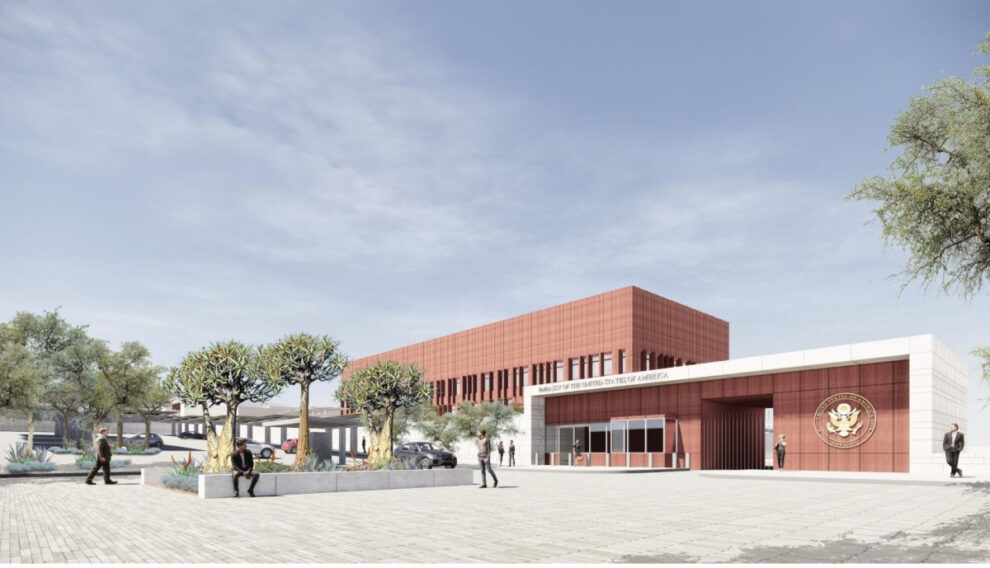U.S. Ambassador to Namibia Randy W. Berry welcomed U.S. Ambassador to the United Nations Linda Thomas-Greenfield, representatives of the U.S. Department of State’s Bureau of Overseas Buildings Operations (OBO), U.S. Mission personnel, and Namibian officials to the formal opening of the new U.S. Embassy Windhoek. The embassy is a testament to the enduring 33-year relationship between the United States and Namibia.
Situated on a 12.8-acre site, the new embassy seamlessly blends U.S. architectural, engineering, and construction expertise with Namibian architectural traditions and locally sourced materials. Its red-sandstone exterior echoes the Namibian landscape, drawing inspiration from local natural landmarks like the Kalahari Desert, Damaraland’s sandstone formations, and the iconic Sossusvlei dunes located in the Namib Desert’s southern region.
The embassy incorporates advanced energy-efficiency systems, including photovoltaic canopies that supply approximately half of the Chancery’s energy needs. In addition, passive environmental strategies and drought-tolerant native landscaping reduce heat gain and irrigation needs, integrating seamlessly with Windhoek’s sustainable water treatment program. Further, the site and landscape design were carefully planned to respect the Klein Windhoek floodplain located adjacent to the property.
Skidmore, Owings & Merrill of San Francisco, California, was the design architect, and B.L. Harbert International of Birmingham, Alabama, constructed the embassy, with PAGE Architects of Washington, D.C., serving as the architect of record. Throughout the project, an estimated $17 million was invested in the local economy, and more than 2,000 Namibians were employed during its construction.
The new embassy reaffirms the strong partnership between the two nations, serving as a hub for diplomatic activities and cultural connections for years to come.
OBO provides the most effective facilities for United States diplomacy abroad. Since the start of the Department’s Capital Security Construction Program in 1999, OBO has completed 178 new diplomatic facilities and has more than 50 active projects in design or construction worldwide.
Source : Miragenews










